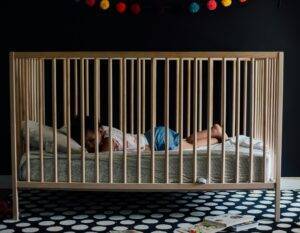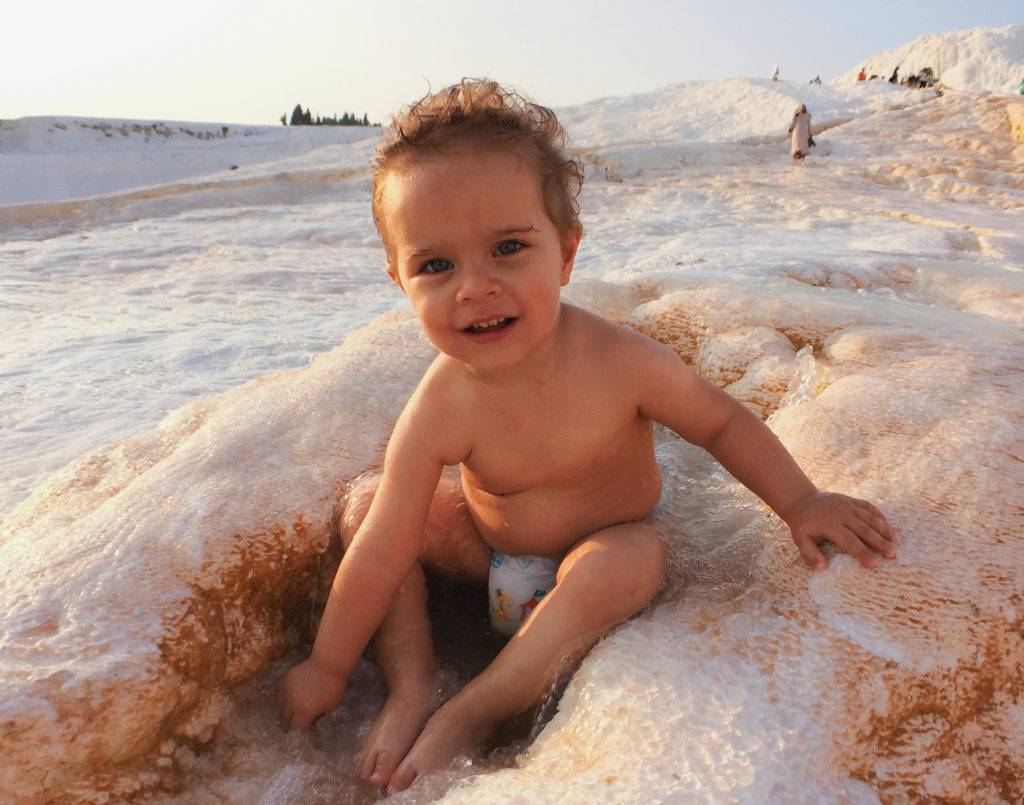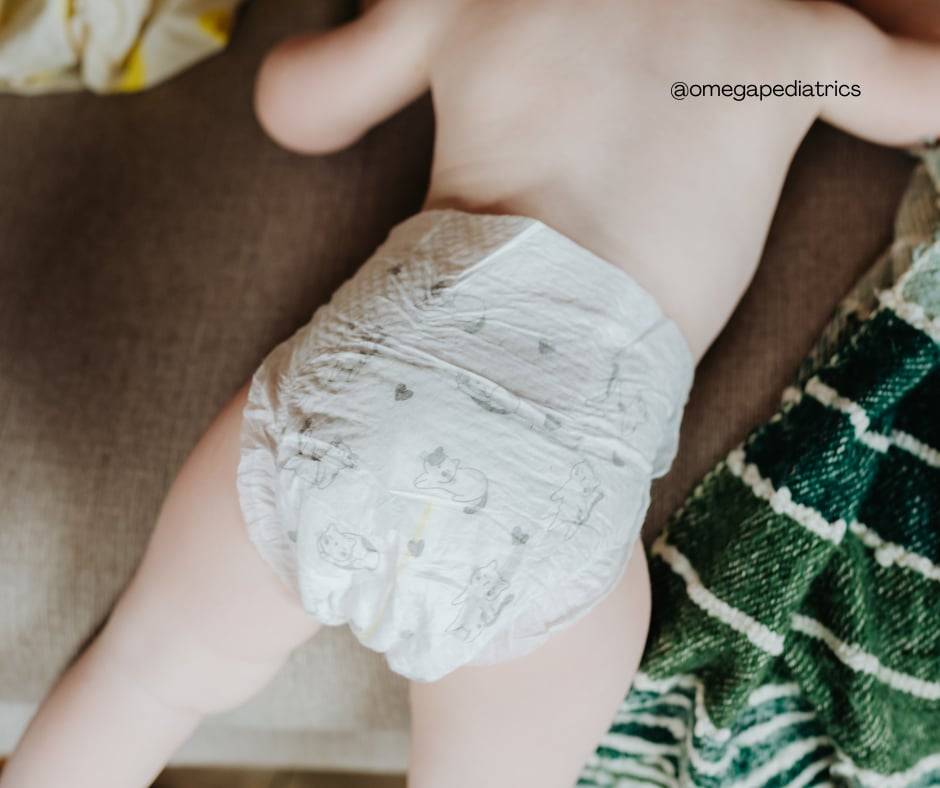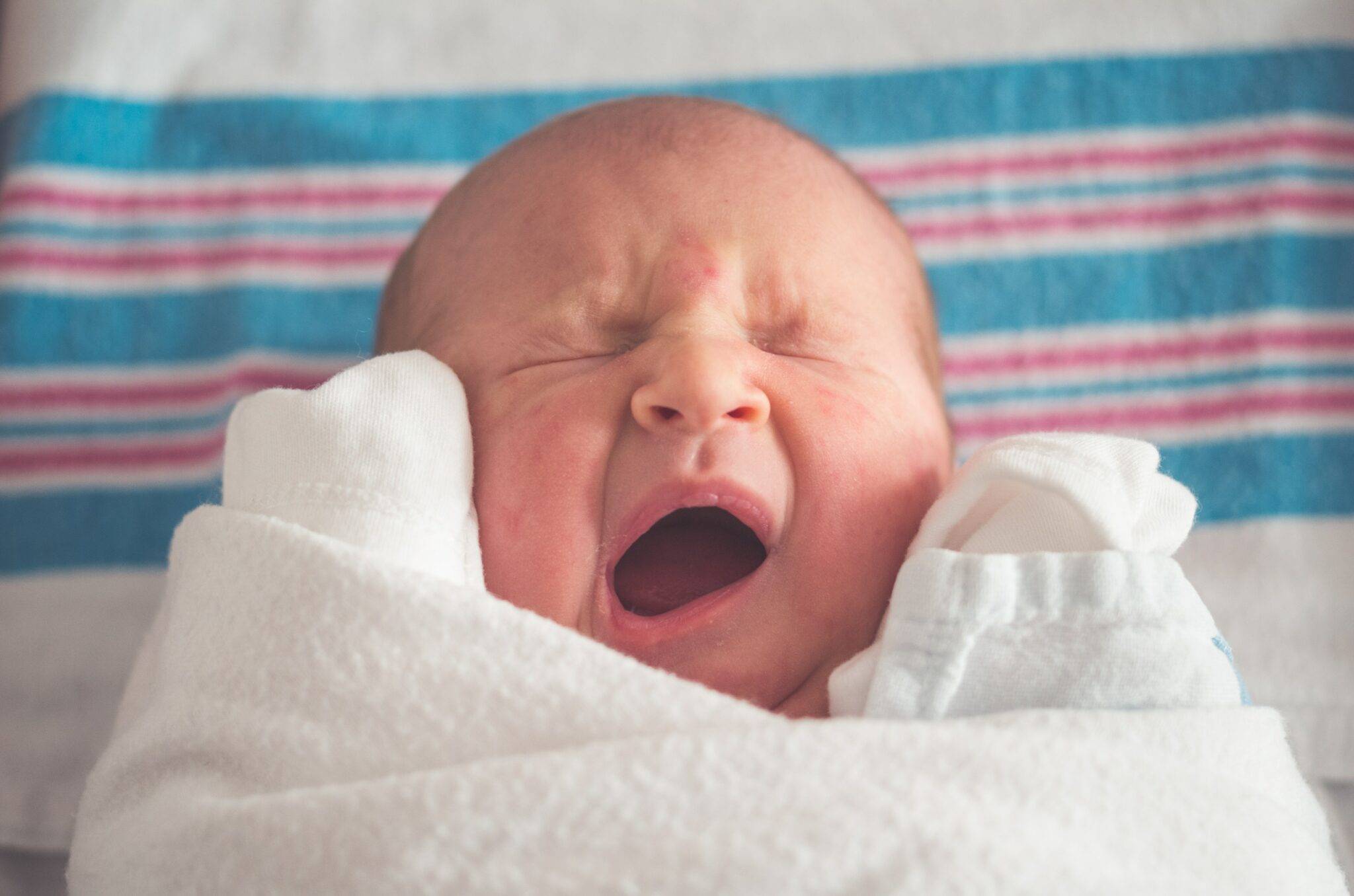As a new parent, one of your top concerns is ensuring your newborn is safe and comfortable, especially in sleep. Many parents wonder: Can newborn baby sleep in crib? The answer is yes, and cribs are considered one of the safest places for your baby to sleep.
While some families opt for bassinets or co-sleepers, cribs provide a safe, long-term solution that grows with your baby. This comprehensive guide will walk you through crib safety, creating a secure sleep environment, and why a crib is an excellent option for your newborn. By the end, you’ll have the knowledge and tools to confidently place your newborn in a crib, ensuring safety and sound sleep for your little one.
What Is Safe Sleep for Newborns?
Before we dive into crib safety, it’s important to understand what constitutes safe sleep for your newborn. Safe sleep refers to practices that reduce the risk of Sudden Infant Death Syndrome (SIDS) and other sleep-related incidents, such as suffocation or strangulation. The American Academy of Pediatrics (AAP) offers clear guidelines for creating a safe sleep environment for your baby. These key recommendations include:
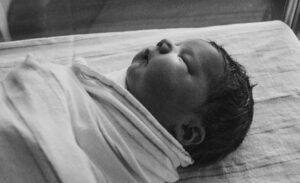
- Place your baby on their back to sleep: Research shows that putting babies to sleep on their backs significantly lowers the risk of SIDS.
- Use a firm, flat sleep surface: Babies should sleep on a firm mattress that doesn’t sink or indent, as this prevents suffocation.
- Remove loose bedding, pillows, and stuffed toys: These items can obstruct your baby’s airway and increase the risk of suffocation.
- Room-share but don’t bed-share: The AAP recommends keeping your baby in your room but not in your bed. Your baby should sleep in their crib, bassinet, or portable play yard, which is close to your bed but separate.
These safe sleep practices are essential for reducing sleep-related risks and promoting a secure, restful environment for your newborn.
Can Newborn Baby Sleep in Crib? Yes, and Here’s Why It’s Safe
Newborns can and should sleep in a crib if it meets safety standards. Many parents might feel that their tiny infant would be “lost” in a large crib, but rest assured, as long as the crib is properly set up, it is one of the safest sleep environments for your baby.
Why Cribs Are Ideal for Newborns
1. Cribs Meet Strict Safety Standards
Cribs that comply with the Consumer Product Safety Commission (CPSC) guidelines are designed to minimize the risk of injury and suffocation. Cribs are larger and sturdier than bassinets, offering more room for growth and reducing the need for an early transition.
2. Promote Independent Sleep
Starting your newborn in a crib from the beginning can help them get used to sleeping independently. This may lead to fewer sleep disruptions as they grow and become more accustomed to their sleep environment.
3. Long-Term Investment
Cribs can be used for many years, unlike bassinets, which are often only suitable for the first few months. Many cribs can transition into toddler beds, making them a cost-effective option for long-term sleep solutions. Cribs are safe for newborns but can be a better long-term solution than smaller sleep spaces like bassinets or portable sleepers. With a little preparation and attention to safety details, your newborn can sleep soundly in their crib right from day one.
How to Create a Safe Sleep Environment in the Crib
Setting up your baby’s crib safely ensures your newborn gets the best sleep possible. Follow these steps to create a secure and cozy sleep space for your baby.
1. Choose a Safe, Certified Crib
The first step to ensuring crib safety is selecting a crib that meets CPSC standards. Avoid hand-me-downs or cribs manufactured before June 28, 2011, when safety regulations were updated. Specifically, cribs with drop-side rails are no longer considered safe, as they have been associated with injuries and fatalities.
Ensure that the slats on the crib are no more than 2 3/8 inches apart to prevent your baby’s head from getting stuck between them. Additionally, ensure that the crib’s construction is sturdy and that there are no sharp edges or loose parts.
2. Use a Firm, Snug Mattress
A firm mattress is essential for preventing suffocation. Soft mattresses or sleep surfaces can create a dangerous environment, as babies can sink into them and be unable to breathe. The mattress fits snugly in the crib, with no more than two fingers of space between the mattress and the crib’s sides.
Some parents may wonder if their baby will be uncomfortable on a firm mattress. While it may seem counterintuitive, a firm sleep surface is best for newborns and helps support their growing bodies while reducing the risk of suffocation.
3. Dress the Crib Appropriately
Many parents want to make their baby’s crib look cozy with blankets, pillows, and stuffed animals, but these items can be dangerous. Newborns should not have any loose bedding in their cribs. Stick to a fitted crib sheet, and if you need to keep your baby warm, use a sleepsack or wearable blanket designed specifically for infants. These are safer alternatives to traditional blankets.
4. Keep the Crib in Your Room
The AAP recommends room-sharing for at least the first six months of your baby’s life. Keeping the crib in your room allows you to monitor your newborn more closely, especially at night. It also makes night feedings easier without going to a separate room. However, your baby should sleep in their crib or bassinet, not in the bed with you, as co-sleeping can increase the risk of suffocation and strangulation.
5. Maintain a Comfortable Sleep Environment
Your baby’s room or sleeping area should be cool but not cold. Aim for 68-72 Fahrenheit room temperature. Overheating has been linked to an increased risk of SIDS, so it’s important to keep the room at a comfortable temperature and avoid overdressing your baby. If you’re unsure whether your baby is too hot, check the back of their neck for sweat. Using a fan to keep air circulating in the room can also help lower the risk of SIDS and keep the air from becoming too stuffy.
Bassinet vs. Crib: Which One Is Better for a Newborn?
Many parents debate whether to use a bassinet or crib for their newborn. Both options are considered safe, with pros and cons for each. Understanding the differences can help you decide which is right for your family.
Bassinet Pros
- Smaller and Portable: Bassinets are smaller and easier to move around the house. This can be helpful for parents who want their baby to nap in different rooms during the day.
- Easier Access: Because bassinets are often smaller and placed closer to your bed, it can be easier to pick up your baby for feedings at night without getting out of bed.
Bassinet Cons
- Short-Term Use: Bassinets are only suitable for the first few months of your baby’s life. Once your baby rolls over or sits up, they will transition to a crib for safety reasons.
Crib Pros
- Long-Term Use: Cribs are a long-term sleep solution. Your baby can use the crib from the newborn stage up to toddlerhood, and many cribs convert into toddler beds, extending their usefulness even further.
- More Room to Grow: Cribs offer more space for your baby to grow. If you start with a crib from day one, you won’t need to transition your baby to a new sleeping space later.
Crib Cons
- Larger Footprint: Cribs are larger than bassinets and take up more space in the room. If you live in a smaller space or want something more portable, a crib might not be as convenient during the newborn stage.
Bassinets and cribs can provide a safe sleep environment, but cribs are often a better long-term solution. If you’re looking for convenience in the first few months, consider using a bassinet and transitioning to a crib when your baby is a little older. However, starting your newborn in a crib can save you from the need to transition later and help establish healthy sleep habits early on.
How Long Should My Baby Sleep in a Crib?
Once your baby sleeps in a crib, they can continue using it until they’re ready for a toddler bed, usually around 2-3 years old. The beauty of using a crib from the beginning is that you won’t have to worry about transitioning to a new space anytime soon. Your baby will have plenty of room to grow and sleep comfortably in the crib.
As your child grows, adjust the crib mattress to the appropriate height. Most cribs have adjustable mattress levels, allowing you to lower the mattress as your baby becomes more mobile. Once your baby can pull themselves up to a standing position, the mattress should be set at its lowest level to prevent falls.
Common Concerns About Newborns Sleeping in Cribs
Even though cribs are a safe and recommended option for newborns, many parents still have concerns about their baby sleeping soundly in the crib. Let’s address some common questions.
What if My Newborn Won’t Sleep in the Crib?
It’s normal for newborns to resist sleeping in a new environment, especially if they’re used to being held or sleeping in a bassinet. If your baby is having trouble adjusting to the crib, try these strategies:
- Swaddle your baby: Swaddling mimics the feeling of being held and can help soothe your newborn.
- Create a calming bedtime routine: A consistent bedtime routine can signal to your baby that it’s time to sleep. This might include a warm bath, a quiet story, or a gentle lullaby.
- Ensure the room is dark and quiet: Darkness can help your baby distinguish between night and day, making it easier to sleep at night.
Be patient and consistent. It can take time for your baby to adjust to sleeping in the crib, but with practice, they will get used to their new sleep environment.
Is It Safe to Let My Newborn Sleep in the Crib Right Away?
Yes, it is safe for your newborn to sleep in the crib from day one, provided the crib is set up according to safety standards. Following the AAP’s safe sleep guidelines, such as placing your baby on their back and avoiding loose bedding, the crib is an ideal sleep environment for your newborn.
Let Your Newborn Baby Sleep in Crib
A crib is one of the safest and most practical options for newborn sleep. It offers a secure, long-term sleep solution that grows with your baby, providing comfort and peace of mind. By following the guidelines for crib safety and creating a calm, comfortable sleep environment, you can ensure that your newborn sleeps soundly and safely.
For more information on safe sleep practices and tips for new parents, check out these helpful articles on Omegapediatrics.
- How to Swaddle Newborns for a Better Night’s Sleep: A 7-Step Guide for New Parents
- 4 Things to Consider in Creating a Safe Sleep Environment for Your Baby
You can also learn about other baby-related topics, including newborn care, and get expert advice to guide you through the early months. Your baby’s sleep is essential for their growth and development, and by choosing a crib, you’re setting the foundation for a healthy, safe sleep environment that will support them as they grow.

